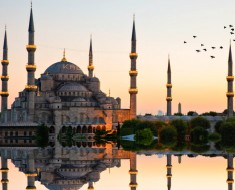Like any large capital city, London is a kaleidoscope of communities, many of them originally villages or suburbs gradually amalgamating into a unified but diverse whole. These days it is essentially an international city where more than a hundred different languages are spoken. Unlike more compact cities you can’t walk London, a visit has to be planned and transport organised if you are going to have a real sense of the place.
The River Thames defines London, as it flows through the city on its way to the estuary and the sea. The first of many bridges was built in 1197, uniting the two sides of the river. Originally a trading post and then a Roman settlement, London has prospered by encouraging trade rather than fortifying itself against attack. Today the South Bank of the river has many cultural attractions – Concert Halls, National Theatre and FilmTheatre, the London Eye, the replica of Shakespeare’s Globe Theatre and the Tate Modern Gallery, whilst on the north bank there is St.
Paul’sCathedral, the Bank of England, the financial centre of the City, and the Houses of Parliament, alleged to be the oldest democratic legislature in the world.
Another feature of London is its parks, open to the public for recreation, family picnics and providing the occasional forum for protest meetings. St JamesPark is notionally the possession of the monarch and near to the monstrous London home of the Queen. Hyde Park is huge and welcoming and Regent’s Park is bordered by the eighteenth century regency buildings of John Nash. London’s West End draws many visitors, with its numerous theatres and fashionable shops and Piccadilly and Leicester Squares are where it all begins. You can now walk freely in nearby Trafalgar Square and Nelson, high up on his monument, is being refurbished as he looks down on the National Art Gallery and St.
Martin’s in the Fields Church, a centre for peace and justice and a sanctuary for homeless people.
The city is peppered by districts that echo the names of the various gateways into the old city – Cripplegate, Aldgate, Moorgate and so on. The excellent London Museum in the Barbican area is well worth a visit, with its summary of the city’s history supported by many artefacts and visuals.
I have looked towards London all my life. I had my first jobs there. As a family we lived in the poorer East End of the city for a decade, during much of the Thatcher years and were made painfully aware of the worst inequalities fostered by her government. But whenever we visit, it is like coming home again.
London in five paragraphs? Impossible!



